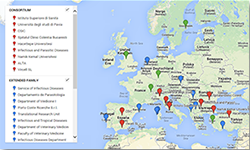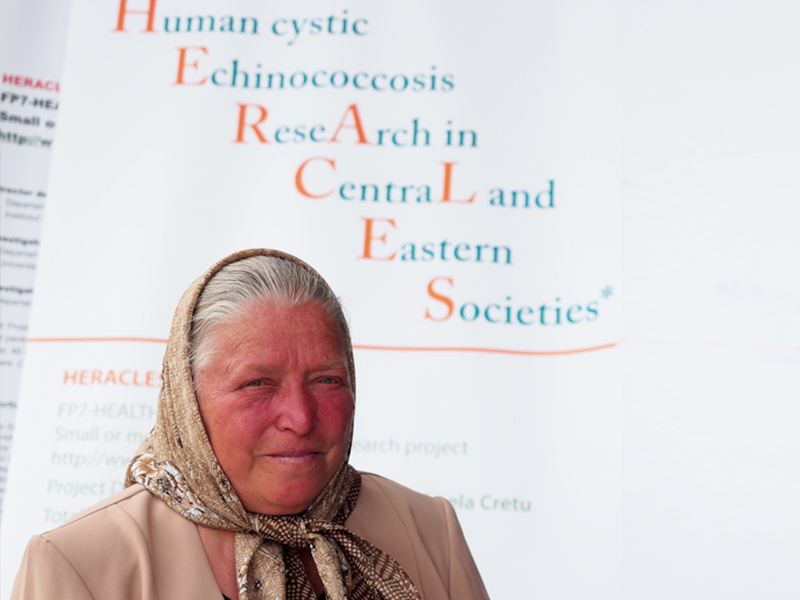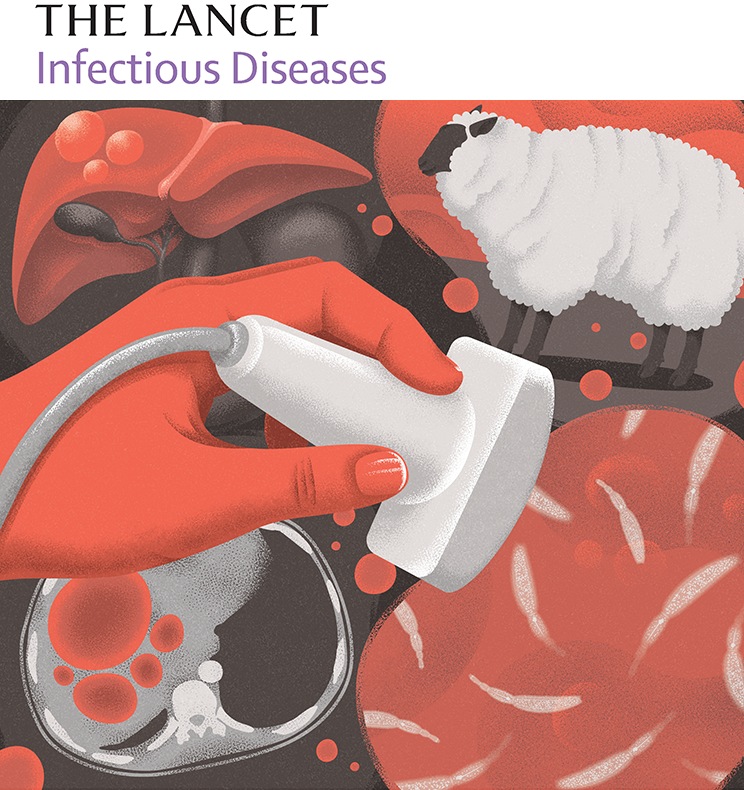Heracles project
New approach needed to tackle parasitic liver disease in Europe and Turkey 31 August 2018 | Geneva –– A cross-sectional study conducted in Bulgaria, Romania and Turkey has found that the true burden of cystic echinococcosis is poorly understood and that many cases remain asymptomatic, with no appropriate medical diagnosis and treatment. The study assessed the prevalence of the disease among rural populations in the three countries. more |
 |
HERACLES' extended network Our interactive map allows easy geolocation of the whole HERACLES' network with all the involved institutes (Consortium, Extended Network, Advisory Board) more |
New article from the World Health Organization  |
 |
The burden of CE in Eastern Europe (ultrasound surveys) Prevalence of abdominal cystic echinococcosis in rural Bulgaria, Romania and Turkey more The Lancet Infectious Diseases © Elsevier Limited / Kouzou Sakai |

Cystic Echinococcosis (CE) is a chronic helminthic disease caused by the infection with the larval stage (metacestode) of the tapeworm Echinococcus granulosus complex. Human CE is estimated in 2-3 million global cases. Disability-adjusted life years (DALYs) and monetary losses resulting from human![]() CE
CE![]() have
have![]() been
been![]() calculated
calculated![]() at
at![]() the
the![]() global
global![]() level
level![]() (assuming
(assuming![]() substantial
substantial![]() under-reporting) as high as 1 million (M) DALYs, or an annual loss of US$ 3 billion (annual cost for treating human cases and livestock industry compensation).
under-reporting) as high as 1 million (M) DALYs, or an annual loss of US$ 3 billion (annual cost for treating human cases and livestock industry compensation).
Data reported from EU countries represent the tip of the iceberg. The invisible portion includes health, social and economic consequences linked to the people affected by CE. In fact, clinically diagnosed cases represent only a small proportion of the total number of infected people (only those that receive medical attention at the hospital level) and they do not reflect the true incidence or prevalence of CE.
There is an urgent need to raise the awareness of CE and bring the magnitude of the problem to the attention of policymakers and general public in these countries. For these reasons HERACLES collaborative project is designed to provide new insights into parasite/host relationship associated with the epidemiology, clinical manifestation, parasite infectivity, host immunity, improvement of therapeutic treatment and new tools for the detection, diagnosis and follow-up of CE. HERACLES will translate the research results into affordable and easy-to-use, point-of-care commercial tools (POC-LOC) for its use in less favored Eastern European countries (EEC) affected by CE. We will deliver a methodology and an amount of data, exploitable in new diagnostic tools for epidemiological surveillance in animals, and diagnosis and follow up in humans. Moreover, the European Registry of Cystic Echinococcosis (ERCE) will be created to provide baseline data for future risk calculations and to establish a prospective case retrieval. The final project stakeholders, such as the rural populations, in which CE is endemic, as well as SMEs will be engaged as an integral part of the work. Special events to increase general awareness and training activities for improving the health care will be organized.
HERACLES will address all these aspects at the same time thanks to the interdisciplinary expertise of its members thus making a direct impact on the National Health Systems of the EEC involved in the project. Any lessons learned are likely to be applicable and useful for other countries where CE represents an important health problem. To summarize, CE remains a chronic disease, complex and still neglected.
 |
|
 |
 |
 |
 |
 |
 |

 Links
Links